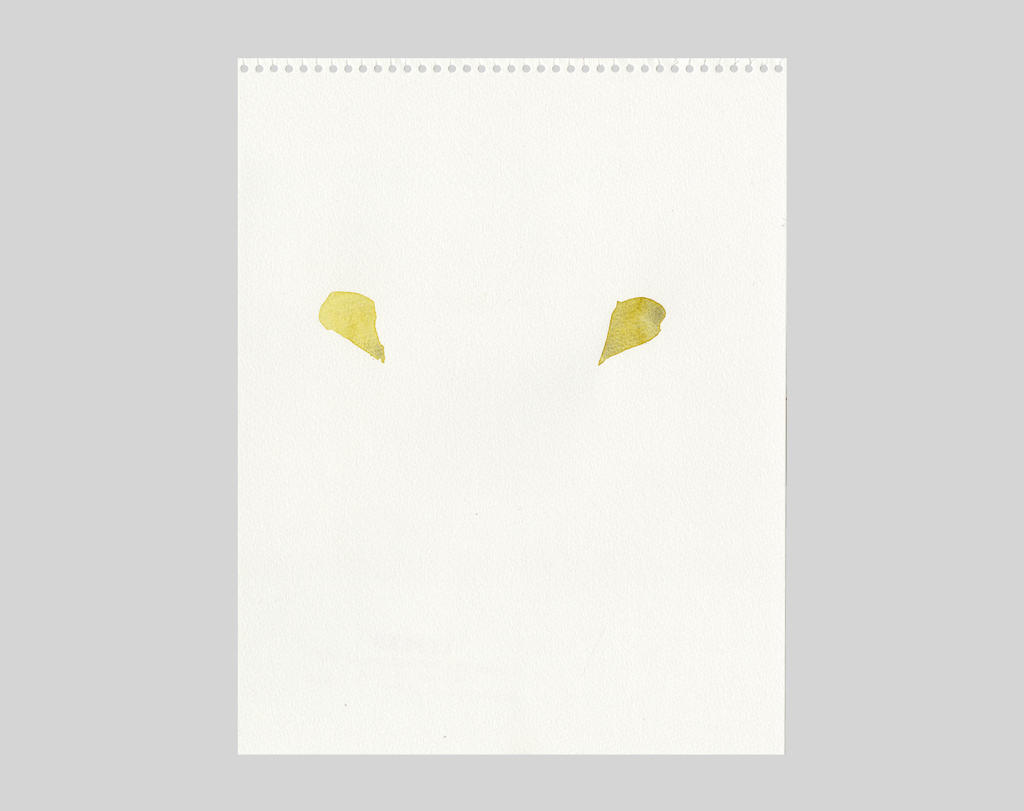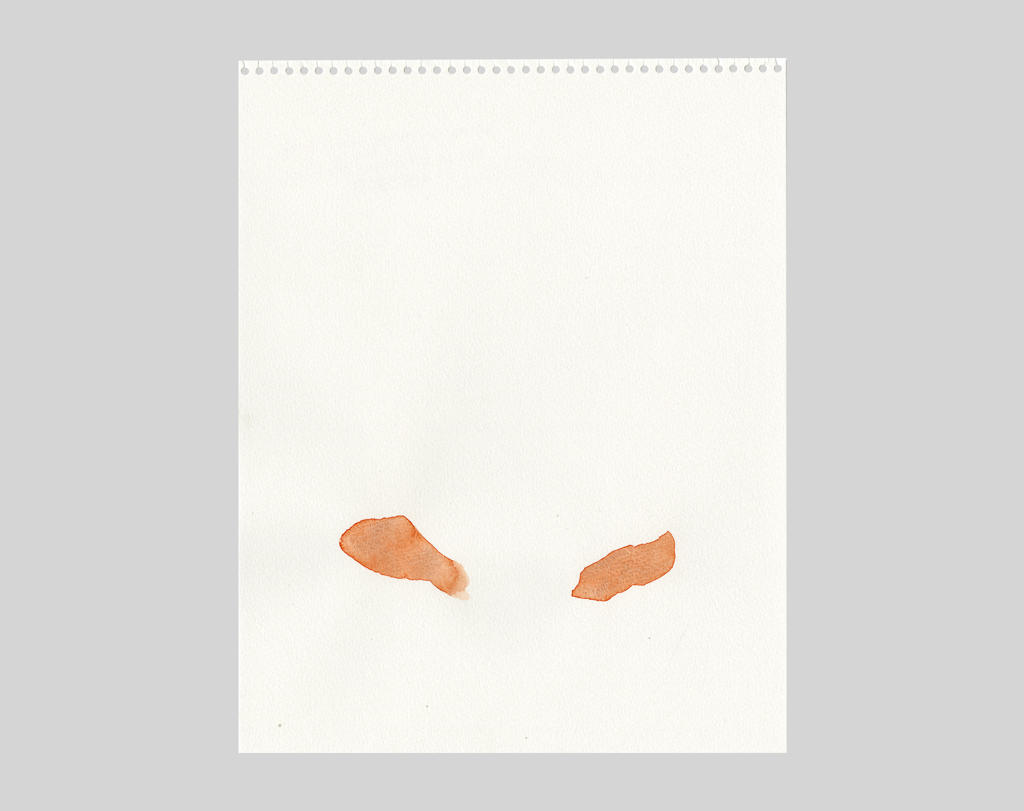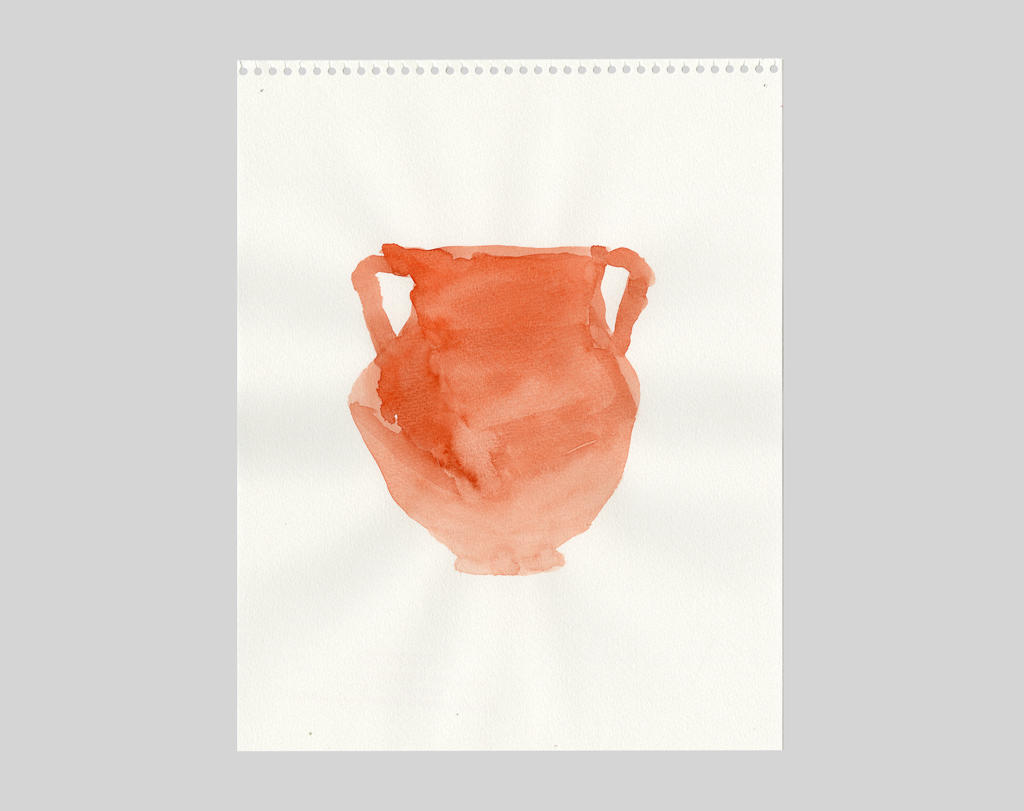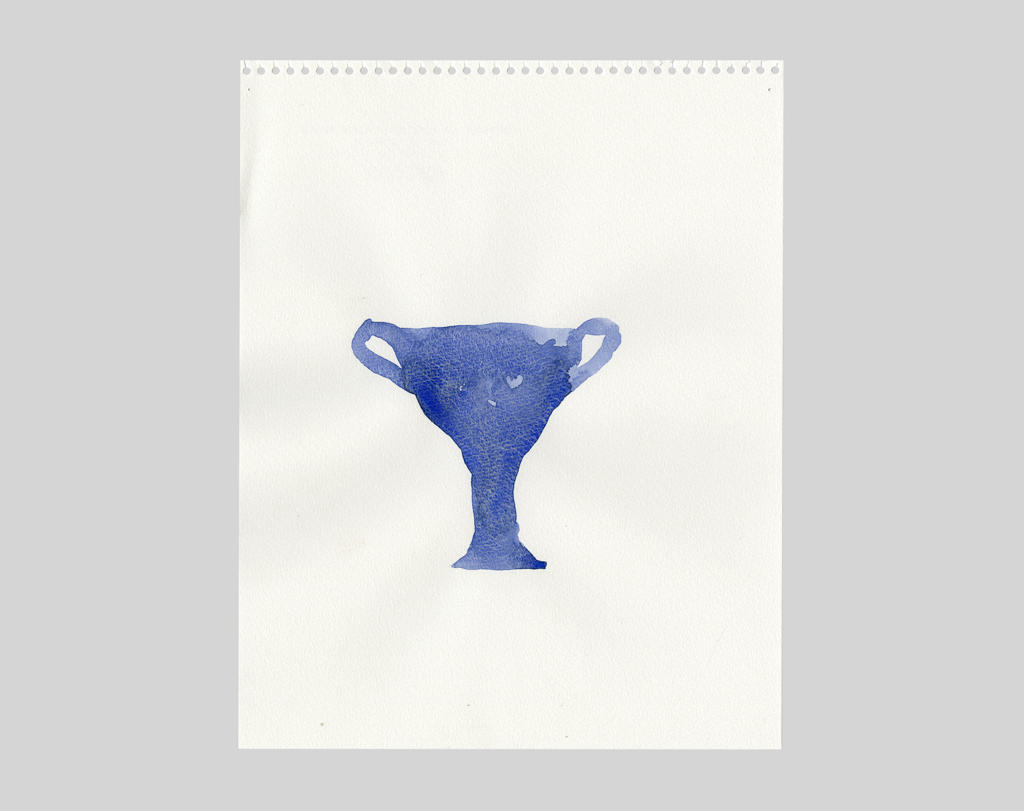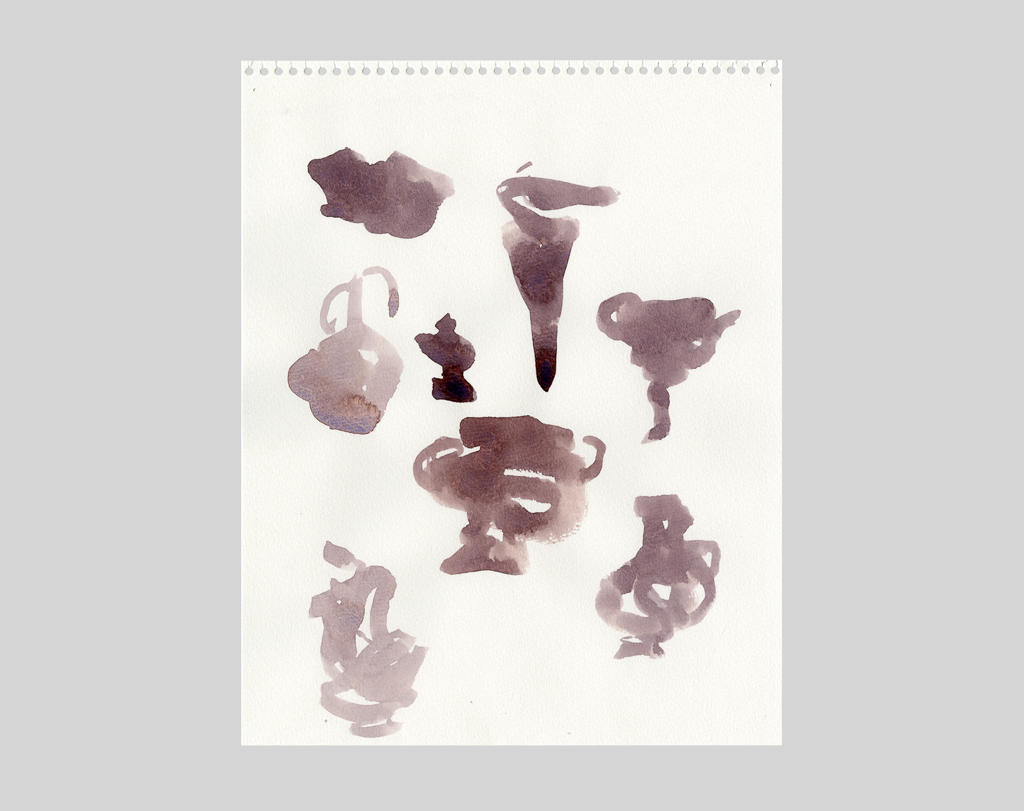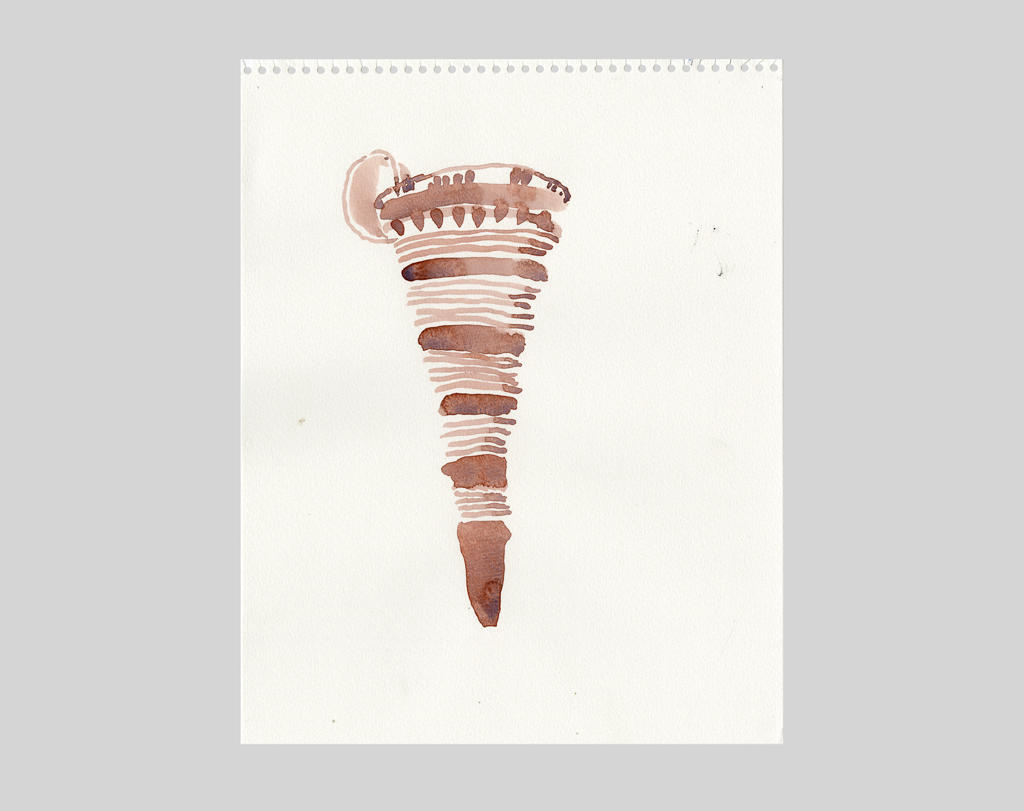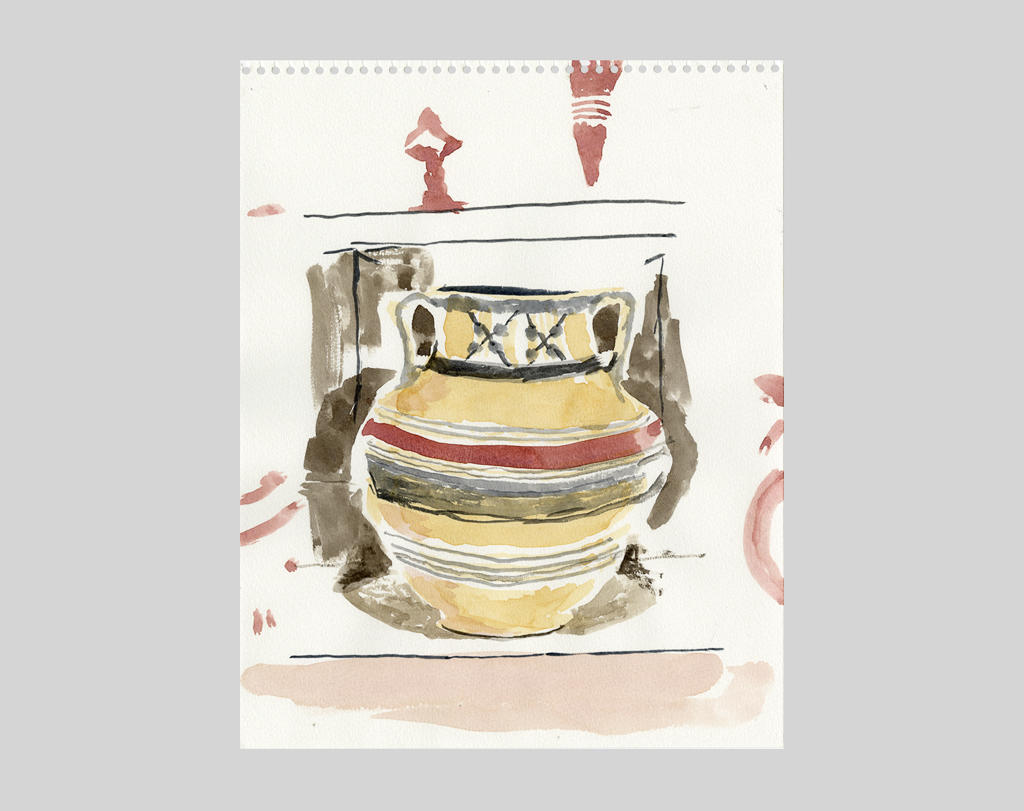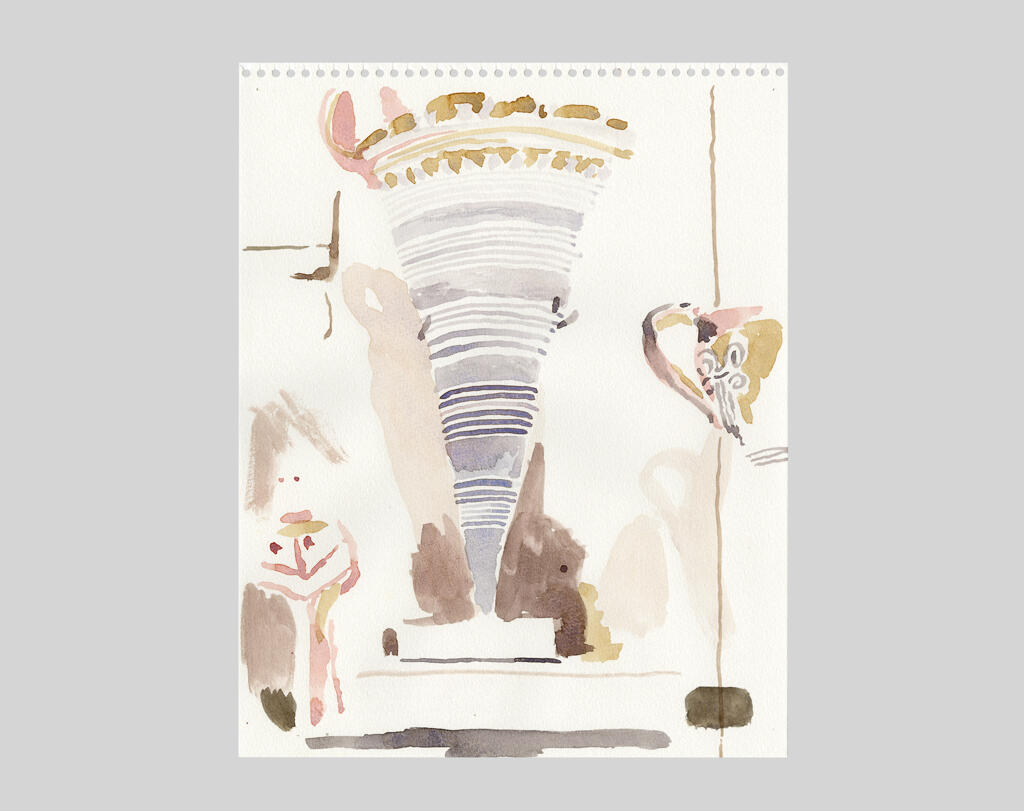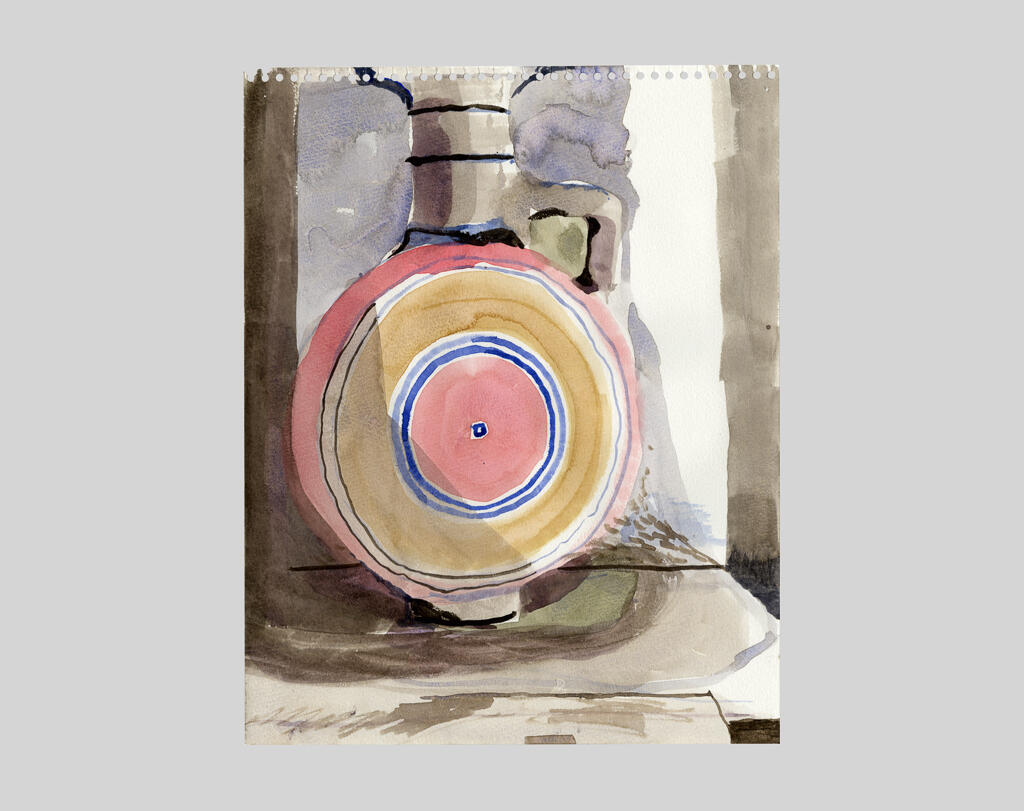As a RISD sophomore this past spring semester, I had the unique opportunity to paint amongst artwork in the RISD Museum collection. Typically, one enters the gallery as an on-site copyist to study and reproduce what is deemed a “masterful” painting, but I felt it was important to find an object or installation that exhibited fundamental aesthetics and open interpretation.
After a couple visits scouring the collection, a particular installation of early Greek pottery struck me. These pieces were completely void of any stereotypical Greek narrative, and the closest resemblance to that would be the abstract ornament hand laden in classical order.

I was settled on the exhibit, and returned to paint the pots for three hours in watercolors. The first works were more straightforward studies, like a formal introduction to each object, the pots painted as they sat amongst one another. Once I became more comfortable, I began exploring them individually and focused on distilling their formal elements, such as symmetry, negative space, and the way the lines describe their forms. All of these qualities allowed different avenues for describing form and space in single gestures. I really like how the marks have guttural tension; they function as a movement within a whole framework, rather than alluding to something beyond itself.
What struck me the most was how this raw yet sophisticated aesthetic felt oddly familiar. The familiarity was not that of other ancient artworks but of the works of Abstract Expressionists/proto-Minimalists, such as Mark Rothko, Barnett Newman, Ad Reinhardt, and most especially Agnes Martin. If you unraveled the conical form of one of the pots and flattened it, it would resemble those painters in one way or another, especially the play between graphic elements and raw texture.
These objects feel very human and present. You can trace the maker’s hand and how they realized the wholeness of each entity.
Davis Lloyd (RISD BFA Painting, 2016)
